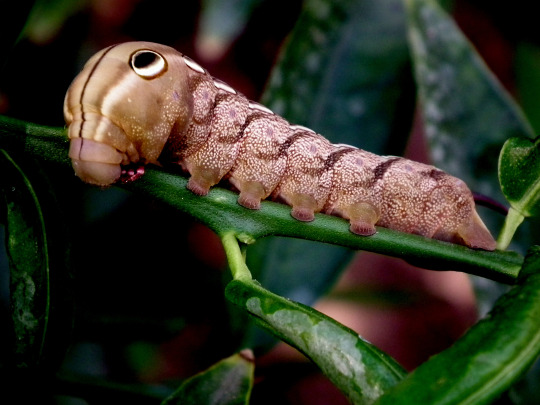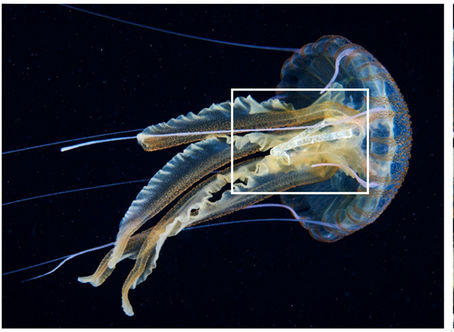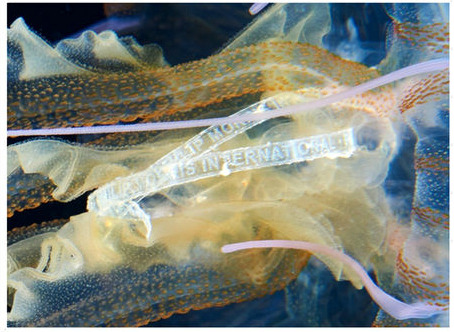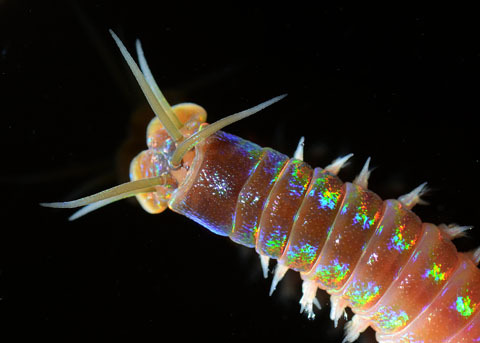Photo


Biodiversity of Gorongosa National Park, Mozambique
Posters presented at the exhibition held in Maputo for the launch ceremony of BIOFUND, Foundation for the Conservation of Biodiversity.
Photo credits: ©Piotr Naskrecki: Frogs and Toads - Insects
367 notes
·
View notes
Photo




Hala tree - Pandanus tectorius
The Hala tree or Screw Pine, Pandanus tectorius (Pandanales - Pandanaceae) is small tree native to the tropical Pacific shores of Polynesia, Micronesia, Melanesia and Australia.
Pandanus tectorius trees are either male or female. Female trees produce a large, amazing, segmented fruit somewhat resembling a pineapple. Male trees produce large clusters of tiny, fragrant flowers surrounded by white to cream colored bracts.
The fruit of Pandanus tectorius is a round or oval head about 8 inches long and consisting of numerous segments called carpels, phalanges, or keys (first and second photo). There are 40 to 80 keys in each fruit. The color of the fruit ranges from yellow to orange to reddish when ripe. It takes several months for the fruits to ripen. Ripe fruits are very fragrant.
This is one of the most useful trees to Pacific Islanders. The leaves, which are the most useful part of the plant, are woven or plaited into mats, thatch, sails, baskets, hats, local fans, etc. Furthermore, the fruit of the Hala tree is a major source of food in Micronesia especially on the atolls. The fleshy, juicy keys can be eaten raw or cooked. And, the juice from the aerial roots tips (last photo) was used as a tonic and to treat scrofula, a tuberculous infection of the skin of the neck, most often caused by mycobacteria.
References: [1] - [2]
Photo credits: [1: source] - [2: ©Marcelo Lutterbach | Locality: Madagascar, 2007] - [3: ©L.S.P. tokyo | Locality. Amami Ōshima, Kagoshima Prefecture, Japan, 2014] - [4: ©David Eickhoff (CC BY 2.0) | Locality: Hoʻomaluhia Botanical Garden, Oʻahu, Hawaii, 2008]
1K notes
·
View notes
Photo

Lantern Bug - Pyrops spinolae
Lantern bugs are planthoppers (Hemiptera - Fulgoridae), typically arboreal, most often associated with a specific host tropical tree and/or vine.
The lantern bugs are so named, incorrectly, because of a head prominence of some species (i.e. Pyrops) resembling a Pinocchio like “nose” that was thought to emit light. Of course this is not true, it does not emit light. Pyrops spinolae (pictured) is known from Thailand, Vietnam and India.
References: [1] - [2]
Photo credit: ©tajong | Locality: Khao Sok Thailand (2015)
961 notes
·
View notes
Photo

Tersa Sphinx Caterpillar - Xylophanes tersa
Caterpillars of the Tersa Sphinx moth, Xylophanes tersa (Sphingidae), may be green or brown, and have one large eyespot and six smaller ones on each side, progressing down the body, with a light stripe roughly bisecting the eyespots. They are eerily snake-like, and the head and three thoracic segments can be withdrawn into the swollen first abdominal segment.
This moth is found in the United States (Massachusetts south to south Florida; west to Nebraska, New Mexico, and southern Arizona), Mexico, the West Indies, and Central America to Argentina.
References: [1] - [2] - [3]
Photo credit: ©Muhammad Shafiq Chandaiser | Locality: not indicated (2013)
283 notes
·
View notes
Photo

Kyonemichthys rumengani • A New Genus and Miniature New Species of Pipehorse (Syngnathidae) from Lembeh Straits, Sulawesi, Indonesia [2007]
Abstract:
A new genus and species of the gasterosteiform family Syngnathidae, Kyonemichthys rumengani, is described from a single 26.8 mm TL adult female collected in Lembeh Straits, Sulawesi, Indonesia.
It is one of the smallest members of the family relative to body mass, and resembles the pipehorse genera Acentronura, Amphelikturus and Idiotropiscis in having a short head and snout angled slightly to the axis of the body, dermal appendages and flexible tail lacking a caudal fin.
It differs from the three most notably in having fewer trunk rings (9, versus 11-15), more tail rings (51, versus 37-46), a posteriorly positioned dorsal fin originating on the eighth tail ring (versus usually originating on the trunk, but not posteriorly farther than the second tail ring) and a uniquely swollen trunk with a medial constriction.
(read more: NovaTaxa - Species New to Science)
Source: Martin F. Gomon. 2007. aqua, International Journal of Ichthyology. 13; 25-30. (www.wakatobi.com/fishID/articles/Gomon2007AQUA13_Syngnathidae.pdf)
photograph by W. Tan
260 notes
·
View notes
Photo

Black Orchid - Fredclarkeara Black Lace ‘Baker’s Dark Angel’
In nature, black flowers are rare. The reality is that there is almost no plant in the world that is truly black in color. Most are shades of deep blue or reds or purples. This is also true about orchid flowers. Growers and hybridizers have tried many different orchid plants and hybrid orchid varieties to try to get to a truly black flower.
Among the most notable hybrids (since 2010) with truly black flowers (currently commercially available from Sunset Valley Orchids) you can find Fredclarkeara (Asparagales - Orchidaceae), an intergeneric hybrid between the orchid genera Catasetum, Clowesia and Mormodes. (Ctsm. x Cl. x Morm.).
The Fredclarkeara breeding produces flowers that are fragrant, have lots of color and are long lasting. As you can see on this one in the photo, the Fredclarkeara Black Lace 'Baker’s Dark Angel’ is indeed black.
References: [1] - [2]
Photo credit: ©Brent Baker | Locality: cultivated (2013)
27K notes
·
View notes
Photo





The Rainbow Nudibranch (Dendronotus iris) is a terrifying beast of hellish fire and infernal flame that resides on the western coast of North America.
There are red ones, orange ones, pink, purple and white ones, and I guess that’s why they’re called Rainbow Nudibranches. But they all look like they’re on fire!
The flames are really branching cerata that allow this large sea slug to absorb all the oxygen it needs. The very biggest individuals can reach as much as a foot long, but they’re usually about a third of that.
Rainbow Nudibranches feed on the tentacles of tube anemones, which are a bunch of creatures that look like sea anemones but live in a tube.
The Rainbow Nudibranch pounces on them and won’t let go until they’ve bitten off some tentacles, even if they get dragged halfway down the tube!
…Images: Ed Bierman/Patrick Webster
3K notes
·
View notes
Photo


Ironwood tree - Memecylon umbellatum
Also referred to as Delek Air tree, Memecylon umbellatum (Myrtales - Melastomataceae), is a large shrub or small tree, up to 8-14m tall, that produces showy clusters of amazing bright purple flowers, about 1 cm each.
This tree, which can be found in Peninsular India and Sri Lanka, is not only beautiful, but also useful since it has several traditional and pharmacological uses. It provides hard timber used for building houses and boats, and a yellow dye can be extracted from the leaves and the bark that is used to treat bruises and various ailments.
References: [1] - [2] - [3]
Photo credit: Photo credit: ©Nuwan Chathuranga | Locality: Sri Lanka (2014)
2K notes
·
View notes
Photo

Bigfoot Splayfoot Salamander - Chiropterotriton magnipes
Chiropterotriton magnipes (Caudata - Plethodontidae), is a cave dwelling salamander known only from south-eastern San Luis Potosi and eastern Queretaro, Mexico.
These little fellows have a total length of around 80-120 mm, with the tail accounting for slightly less than half of this measurement. The head is flat and wide, with large bulging eyes. This species is unique among the splayfoot salamanders in the fullness of the wedding of its feet and because it has pad-like structures on the tips of its fingers and toes.
The Bigfoot Splayfoot Salamander is listed as Critically Endangered on the IUCN Red List; it has been seen very rarely in recent years, despite searches.
References: [1] - [2]
Photo credit: ©Rodrigo Villegas | Locality: not indicated (2011)
1K notes
·
View notes
Photo

BADASS SEA URCHINS DRILL HOLES IN SOLID ROCK
In temperate rocky reefs, sea urchins are abundants, and often occur in cavities within the rock, and fit so tightly, it is natural to assume they sculpted these “pits. For a long time, scientists have wondered if they did really mold them by themselves, but until now there was no data to support this idea. A new study has allowed to see how these animals create these pits of the rocks thanks to an experiment carried out with purple sea urchins (Strongylocentrotus purpuratus). The results, published in the journal PLoS ONE, reveal that they are the sculptors of these holes.
Scientists recreated environmental conditions where sea urchins lives, with fine and medium-grained sandstone rocks, lulita and granite from three California reefs where these echinoids tend to inhabit, and where researchers also did field measurements. After observing them, researchers proved that sea urchins actually excavate rocks, with just their teeth, removing material from all the rocky surfaces. In the lab, rates of excavation varied greatly according to the type of rock. While each sea urchin excavated about 32 grams of medium-grained sandstone for a year, which would allow them to excavate a medium hole in less than five years, the excavation in granite was 37 times slower, a task so hard that it would take more than a century to make a hole.
In medium-grained sandstone reefs, sea urchins can produce almost 200 tons of sediment per hectare in just one year. When compared with the field observations, the scientists were able to confirm this difference: granite holes were shallower than the sandstone holes, and sea urchins living in granite were flatter.
Photograph: Michael Russell
Reference: Russell et al. 2018. Bioerosion by pit-forming, temperate-reef sea urchins: History, rates and broader implications. PLoS ONE.
346 notes
·
View notes
Video
youtube
MATING DEEP-SEA ANGLERFISH RECORDED ON VIDEO FOR THE FIRST TIME
Scientists have hardly ever seen anglerfishes alive in their natural environment, in fact, what we know about these weird fishes comes from specimens caught in traps and brought to the surface. But now a video recorded in 2016 at a depth of 800 meters in the waters around Portugal’s Azores islands, has surprised the science community.
The high-quality video shows a female fanfin angler anglerfish (Caulophryne jordani), resplendent with bioluminescent lights and elongate translucent filaments projecting outward from her body. She is also attached to a male, who basically acts as a sperm provider.
Males have well developed sense organs that are used to find a female. When a male finds a female, he bites her and doesn’t let go. His skin fuses with the female and he becomes a parasite symbiont on her. Love is love.
Video footage: Kirsten and Joachim Jakobsen Rebikoff-Niggeler Foundation
712 notes
·
View notes
Photo

PLASTIC FOUND IN JELLYFISH FIND ITS WAY THROUG FOOD WEB
Plastic debris interacting with marine organism is sadly not a new thing, in fact, researchers believe there is no animal free of this problem. Found in large marine mammals, to small zooplancton, even in larvaceans. Marine pollution expands through the animal kingdom. Thus invertebrates represent the most plentiful component of marine biodiversity. To date, plastic ingestion has been documented for 233 marine vertebrates, however, this list could increase as more research is done.
Now, researchers report for the first time the presence of macroplastic debris in a jellyfish species. Recorded during the Mediterranean campaign of the “AQUATILIS EXPEDITION” on Ponza Island, in the Tyrrhenian Sea, mauve stingers were found along with floating anthropogenic litter of different size, colour, shape and type. No similar observations have been reported so far for jellyfish, although their blooms have been observed in regions of plastic accumulation.

- A swimming mauve stinger (Pelagia noctiluca) observed with a plastic lace of a famous cigarette brand among the oral lobes.
Plastic ingestion is associated with both physical damages such as gut blockage, reduced energy reserves and starvation, and potential toxicity due to persistent, bioaccumulative and toxic substances adsorbed onto the plastic surface .Thus, plastic debris provides a pathway for these chemicals to enter marine ecosystems through plastic ingestion.
With this first approach, researchers believe that jellyfish could act as vector of plastics along marine trophic webs, raising further concern on the impact of plastics on marine organisms. Further studies are urgently needed to understand any potential effect for this species and the real extent of trophic transfer of plastic debris.
Reference: Macali et al., 2018. Episodic records of jellyfish ingestion of plastic items reveal a novel pathway for trophic transference of marine litter Scientific Report.
577 notes
·
View notes
Photo

NEW SPECIES ALERT: CUTE PYGMY SEAHORSE DISCOVERED IN JAPAN
An international team of marine biologists has discovered a new species seahorse in the waters off Izu Islands, southeast Japan.
Named Japanese pygmy seahorses, or Hachijo-tatsu in japanese (Hippocampus japapigu), is diminutive in size, with 1.36-2.6 cm, long. The Japanese pygmy seahorse live in close association with octocorals, colonial hydrozoans, bryozoans, seagrass and algae.
Japan is recognized as a global hotspot of marine biodiversity, with 53 recorded species of syngnathids, family of fish which includes seahorses, pipefishes, and allies, this country have around ten species of seahorses of which four are true pygmy seahorses. This new species represent the fifth pygmy seahorse species to Japan.
Photo: Japanese Pygmy Seahorse in situ, Hachijo-jima Island, Izu Islands, Japan at 15 m depth, photo by Richard Smith.
Reference: Short et al., 2018. Hippocampus japapigu, a new species of pygmy seahorse from Japan, with a redescription of H.pontohi (Teleostei, Syngnathidae). ZooKeys
watch the new species on video
[Image description: a single japanese pygmy seahorse is attached to a fragmented gorgonian. The shape and coloration seem to be similar with its surrounding environment.]
2K notes
·
View notes
Photo

CORALS ARE MORE COLLABORATIVE AND FEROCIOUS THAN WE THOUGH
Corals are sessile animals, they feed on zooplankton. Coral polyps come out of their skeletons to feed, stretching their stinging tentacles to capture floating preys, which will then be digested in their stomachs. But a recent observation of a rare behavior is changing our mind about how coral catch and consume large animals. Marine biologists noticed in waters around italian island how orange coral (Astroides calycularis) catches and consumes mauve stinger (Pelagia noctiluca), a large jellyfish, potentially stinging.
The Orange Coral is endemic to the Mediterranean Sea where it can be reef forming, where colonies frequently occur in dense aggregations. High water movement promotes massive colony shapes, leaving little space for the settlement of other benthic organisms. Polyps coral form a “wall of mouths, where they coordinates to feed on large jellyfish. Researchers saw 20 mauve stinger eaten by corals in 2010, 2014, and 2017, during field survey campaigns carried out in different localities of the Mediterranean Sea.

- Gifs of a mauve stinger being eaten by a “wall of mouths”.
Corals and jellyfish are related, both belonging to the cnidarians, a group of soft body animals with stinging tentacles surrounding a single mouth.
This is not the fist time a coral has been spotted consuming a jellyfish, medusivory have been described several times. In 2009, researchers described a mushroom corals slurping up moon jellies in the Gulf of Aqaba (Red Sea), also, in 2014 Indonesian anemones were discovered feeding on several kinds of swimming jellies.
Photo: Musco et al., 2018.
Reference: Musco et al., 2018. Protocooperation among small polyps allows the coral Astroides calycularis to prey on large jellyfish. The Scientific Naturalist.
Full video here.
[Image description: a group of yellow polyps of coral stick to a large single jellyfish]
380 notes
·
View notes
Photo

MARINE WORMS ARE EATING MARINE DEBRIS AND CREATING MICROPLASTICS
Buoys of expanded polyestyrene (EPS), are often used in the aquaculture industry, and after time, slowly disintegrate under the influence of sunlight, weather, and animals too. According to a recent study, bristle worms (polychaetes) showed their are eating particles of polyestyrene from buoys, and then excreting microplastics.
Researchers found a lot of EPS particles in the feces of polychaetes from EPS debris, they noted polychaetes burrowed into EPS debris and created numerous EPS microplastic particles, this mean theses organisms are inhabiting marine debris and contributing to microplastic formation.

- Marphysa sanguinea is a common polychaete worm, with two strong black teeth (seen in picture a). This one measures 22 cm, and was collected from EPS buoy debris. EPS particles are clearly seen inside polychaete digestive tract (b), and in feces ©.
According to researchers, polychaetes burrowed into the blocks and created numerous EPS particles, indicating that a single polychaete can produce hundreds of thousand f microplastics particles per year. These finding reveal the potential role of marine organisms as microplastics producers in the marine environments.
Photo of a Marphysa sanguinea by Peter J. Bryant
Reference (Open Access): Jang et al., 2019. Formation of microplastics by polychaetes (Marphysa sanguinea) inhabiting expanded polystyrene marine debris. Marine Pollution Bulletin
134 notes
·
View notes
Photo


CT scan showing the internal and external structure of the Derwent River seastar, a species of sea star recently declared extinct.
Credit: Dr Christy Hipsley, Museums Victoria/University of Melbourne
154 notes
·
View notes
